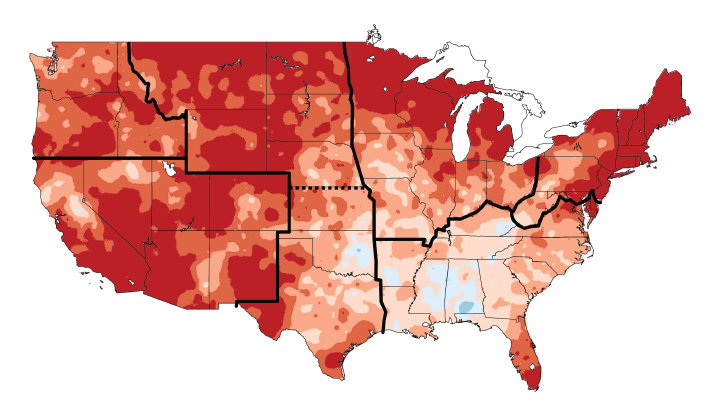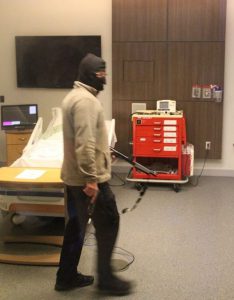Archive for the ‘Education’ Category
Public Health Emergency Law Online Training
Thursday, January 30th, 2020Management of public health emergencies requires effective use of legal authorities. In these incidents, public health and emergency management responses must be coordinated under a complex set of federal, state, tribal, and local laws. CDC’s Public Health Emergency Law course prepares state, tribal, local, and territorial practitioners to make informed legal decisions related to emergency preparedness and response activities in their jurisdictions.
PHEL consists of three competency-based units and covers legal issues to consider before, during, and after public health emergencies. Each interactive unit takes about 40 minutes to complete.
Public Health Emergency Law Online Trainingexternal icon
- Unit 1—Introduction to Emergency Management Systems Preparedness and Response
Covers the legal underpinnings of emergency management systems - Unit 2—Emergency Powers: Protection of Persons, Volunteers, and Responders
Describes legal considerations for personnel responding to emergencies - Unit 3—Emergency Powers: Management and Protection of Property and Supplies
Examines considerations surrounding materials and property during public health emergencies
Disclaimer: These course materials are for instructional use only and are not intended as a substitute for professional legal or other advice. While every effort has been made to verify the accuracy of these materials, the legal authorities and requirements may vary from jurisdiction to jurisdiction. Always seek the advice of an attorney or other qualified professional with any questions you may have regarding a legal matter. The contents of these presentations have not been formally disseminated by the Centers for Disease Control and Prevention and should not be construed to represent any agency determination or policy.
WHO course: Emerging respiratory viruses, including nCoV: methods for detection, prevention, response and control
Thursday, January 30th, 2020https://openwho.org/courses/introduction-to-ncov
Course information
Overview: This course provides a general introduction to emerging respiratory viruses, including novel coronaviruses. By the end of this course, you should be able to describe:
- The nature of emerging respiratory viruses, how to detect and assess an outbreak, strategies for preventing and controlling outbreaks due to novel respiratory viruses;
- What strategies should be used to communicate risk and engage communities to detect, prevent and respond to the emergence of a novel respiratory virus.
There are resources attached to each module to help you dive further into this topic.
Learning objective: Describe the fundamental principles of emerging respiratory viruses and how to effectively respond to an outbreak.
Course duration: Approximately 1 hour.
Certificates: No certificate available at this time.
Attention:
- WHO teams are working on additional modules which will be uploaded in the coming days.
- You will be notified when new modules and videos are uploaded. Currently, the materials are offered as slide decks.
- The course will offer a certificate in the future, after all of the modules have been published and a quiz has been added to each module.
Course contents
-
Emerging respiratory viruses, including nCoV: Introduction:
This brief introduction provides an overview of emerging respiratory viruses, including nCoV.
-
Module A: Introduction to Emerging respiratory viruses, including nCoV:
Overall learning objective: To be able to explain why an emerging respiratory virus, including nCoV are a global threat to human health
-
Module B: Detecting Emerging respiratory viruses, including nCoV: Surveillance and Laboratory investigation:
Overall learning objective: To describe how to detect and assess an emerging respiratory virus outbreak
-
Module C: Risk Communication and Community Engagement:
Overall learning objective: To describe what strategies should be used to communicate risk and engage communities to detect, prevent and respond to nCoV
Learning about climate change and sustainability will soon be compulsory for all students across Italy
Thursday, November 7th, 2019
“…….Starting next school year, schools will be required to dedicate 33 hours per year — almost one hour per school week — to discussing the challenges of climate change,…..”


You are help until help arrives: FEMA
Wednesday, November 6th, 2019Audio can be found at: Soundcloud Link
The University of Toledo and the Lucas County Sheriff’s Office team up to provide training for situations of mass violence
Saturday, September 14th, 2019Active Shootings in Hospitals: Room for improvement
Sunday, December 2nd, 2018September is National Preparedness Month
Thursday, September 6th, 2018Related Links:
- Emergency Preparedness and Response: Pregnant Women and Newborns
- Emergency Preparedness and You
- Emergency Preparedness and Response: Training Course (for health professionals)






